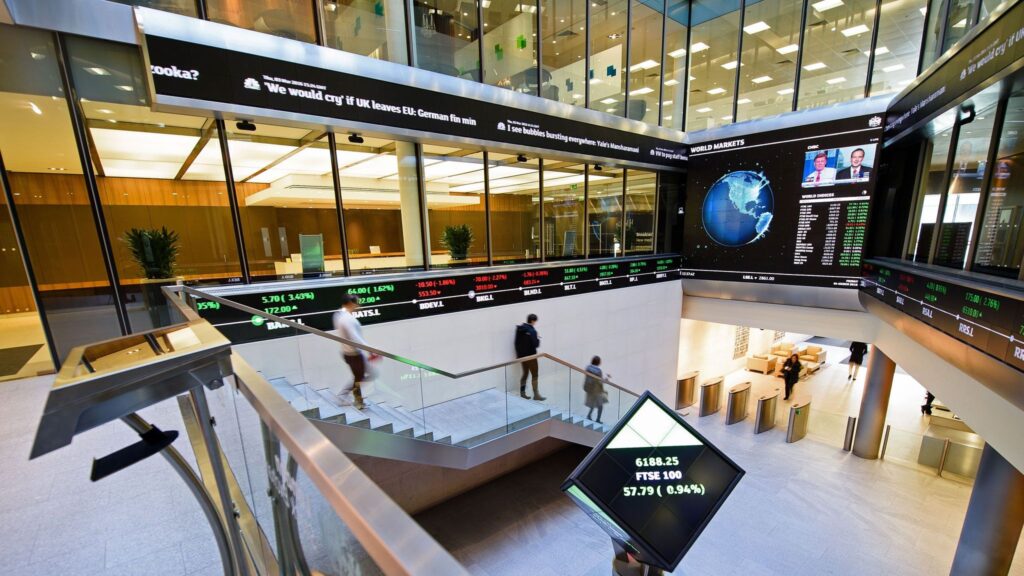
The UK’s FTSE 100 index has surged to a three-month high, capping off a rollercoaster month characterized by market volatility and shifting investor sentiment. Despite the ups and downs, the index has shown resilience, driven by a combination of strong corporate earnings, favorable economic data, and strategic moves by the Bank of England. Here’s a closer look at the key factors behind the FTSE 100’s recent performance.
Robust Corporate Earnings
Several companies within the FTSE 100 have reported solid earnings, surpassing market expectations. Key sectors such as financial services, consumer goods, and energy have led the charge, benefiting from strong demand, effective cost management, and strategic investments. These positive earnings reports have bolstered investor confidence, driving the index higher.
Favorable Economic Data
The UK economy has shown signs of resilience, with recent data indicating steady growth in key sectors. Indicators such as GDP growth, employment rates, and consumer spending have been stronger than anticipated, painting a positive picture of the country’s economic health. This has helped to offset some of the concerns about inflation and rising interest rates, encouraging investment in UK equities.
Bank of England’s Strategic Moves
The Bank of England has played a crucial role in shaping market sentiment. Its recent decisions to maintain interest rates and its cautious approach to monetary tightening have been well-received by investors. The central bank’s commitment to managing inflation without stifling economic growth has provided reassurance, contributing to the FTSE 100’s gains.
Commodity Price Fluctuations
The FTSE 100, with its significant exposure to commodity-based companies, has benefited from fluctuations in global commodity prices. Recent spikes in oil and metal prices have boosted the profits of energy and mining giants listed on the index. This, in turn, has pushed the FTSE 100 higher, as these companies constitute a substantial portion of the index.
Global Economic Factors
Global economic conditions have also played a role in the FTSE 100’s performance. Positive developments in the US and Chinese economies, along with easing tensions in international trade, have contributed to a more favorable environment for global markets. The UK, being a major trading nation, has benefited from these trends, supporting the upward movement of its leading stock index.
Brexit Stabilization
While Brexit continues to pose challenges, the resolution of some key issues has reduced uncertainty for businesses and investors. The UK’s post-Brexit trade agreements, especially with the European Union and other major economies, have provided a clearer path forward for many companies. This stability has encouraged investment in the UK market, helping to lift the FTSE 100.
Sector-Specific Gains
Specific sectors within the FTSE 100 have outperformed others, driving the index higher. The financial sector, in particular, has seen gains due to rising interest rates and a robust housing market. Similarly, the pharmaceutical and healthcare sectors have benefited from increased demand for healthcare services and products, which has been a steady source of growth throughout the month.
The FTSE 100’s rise to a three-month high reflects the index’s resilience amid a month of market turbulence. With strong corporate earnings, favorable economic data, and strategic support from the Bank of England, the UK’s leading stock index has managed to navigate a volatile environment successfully. As the UK continues to recover from the pandemic and adapt to post-Brexit realities, the FTSE 100 is poised for further gains, offering a promising outlook for investors.





